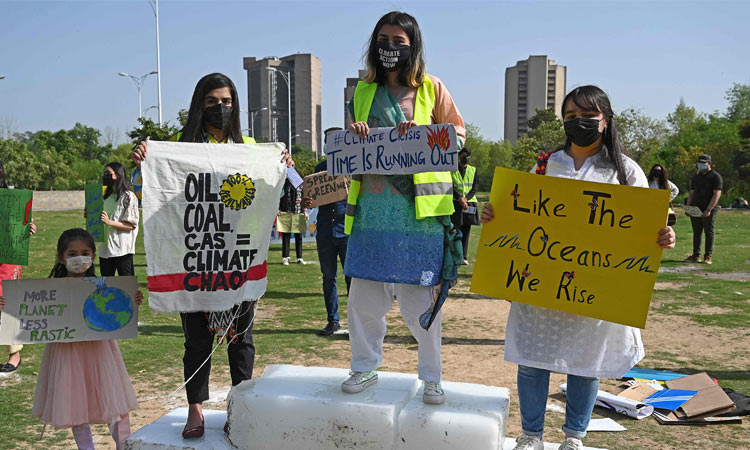The imperiled Great Lakes take the national stage

A view of one of the lakes.
Joel Brammeier, Tribune News Service
This past winter, Great Lakers noticed something conspicuous by its absence — ice. Ice coverage on the lakes was the lowest in 50 years. Lake scientists told us that 2024 was one year of a long-term trend of less ice connected to the impacts of the climate crisis on our lakes. According to research by the National Oceanic and Atmospheric Administration and the University of Michigan, average temperatures in the region have risen 2.3 degrees Fahrenheit since 1951. Summer lake surface temperatures have been increasing faster than the surrounding air temperatures, with Lake Superior rising by 4.5 degrees.
Fast-forward to this already-sweltering summer when both major US political parties are hosting presidential nominating conventions in Great Lakes cities: first, the Republican National Committee convention in Milwaukee, followed by the Democratic National Committee’s nominating event in Chicago, set for Aug. 19 to 22. Candidates and campaigns will have a clear opportunity to stake out solutions and remedies for the threats to our region’s most precious natural resource — the Great Lakes. The lakes hold about 22% of the world’s fresh surface water. As North America gets hotter and dryer, protecting our source of drinking water is paramount.
While tens of millions of Americans rely on the Great Lakes for their drinking water, a healthy Lake Erie, Lake Superior, Lake Ontario, Lake Huron and Lake Michigan are also economic engines. They generate billions of dollars in the fishing, recreation and tourism industries. If it were its own country, the Great Lakes region would have a gross domestic product of $6 trillion — making it the third biggest economy in the world.
Aside from being home to one of Earth’s globally unique natural resources, the Great Lakes region contains critical manufacturing centers, six of the nation’s top corn-producing states and thriving urban treasures such as Chicago and Milwaukee. The region is large, diverse and reflective of a wide range of American experiences, and 113 members of the US House of Representatives hail from the eight Great Lakes states. The Great Lakes face a host of environmental challenges — threats that climate change is already making worse. From 1951 through 2017, the amount of precipitation in the heaviest storms increased by 35% in the Great Lakes region. These deluges overwhelm crumbling stormwater and sewage infrastructure already at a tipping point. Water levels in the lakes rose at an astonishing rate from 2014 to 2020. Erratic and extreme water level changes, combined with heavier rainfall, put coastal properties and communities at risk. Lake Erie is so fouled from agriculture pollution that toxic summer algal blooms mean daily warnings for people and pets to stay away from the water. Adding insult to injury, Ohio residents pay extra for safe drinking water due to treatment costs. The poison algae problem has spread to all five Great Lakes. Warmer water turbo-charges these blooms and causes them to appear earlier and grow bigger.
Voracious ecosystem- and economy-destroying invasive carp are massing in the Illinois River, threatening to invade Lake Michigan. Invasive species can thrive in water made hotter by our warming atmosphere, while native cold-water species can get pushed out.
Plastic pollution isn’t caused by climate change, but the production of single-use plastic depends on fossil fuels. Our Great Lakes suffer from a plastic pollution scourge like the oceans, but with scant attention in comparison. More than 85% of shoreline debris over the last two decades was either partially or totally composed of plastic. And plastic particles don’t go away; they just break down into smaller pieces called micro- or even nano-plastic. Plastics are now found in our Great Lakes, our drinking water, our food and our bodies. We remain underprepared for these challenges ahead, even as the Great Lakes region is viewed by some as a climate refuge — both for people and for businesses that rely on water access.
States, cities and organizations are working every day to solve these problems. But the Great Lakes cross state, tribal and international lines, so the federal government has a huge role to play. Two decades ago, the region came together to seed what eventually became known as the Great Lakes Restoration Initiative, which is paying for the ongoing cleanup of some of the worst contaminated sites in the region. Our question today: What new commitments will the next administration advance to support this vital part of the country?
Whether replacing failing infrastructure, reducing sources of plastic pollution, stopping invasive species or reckoning honestly with agriculture, federal priorities can be the difference between clean lakes and healthy people, and festering problems that damage human health, our economy and the environment. In 2025 and beyond, the more than 30 million Americans who rely on Great Lakes water every day need federal leadership and action to help us keep the Great Lakes healthy and economically thriving.







